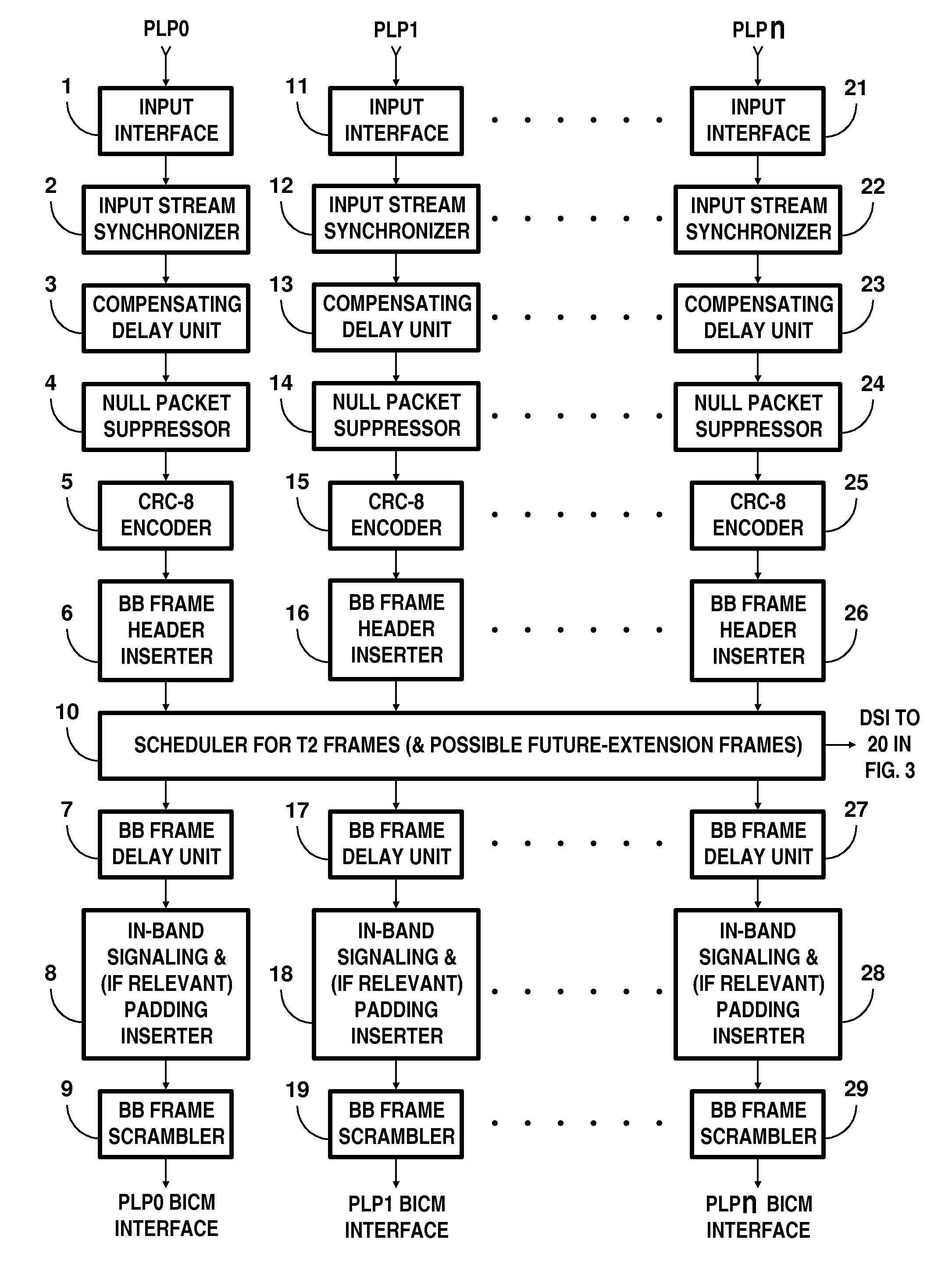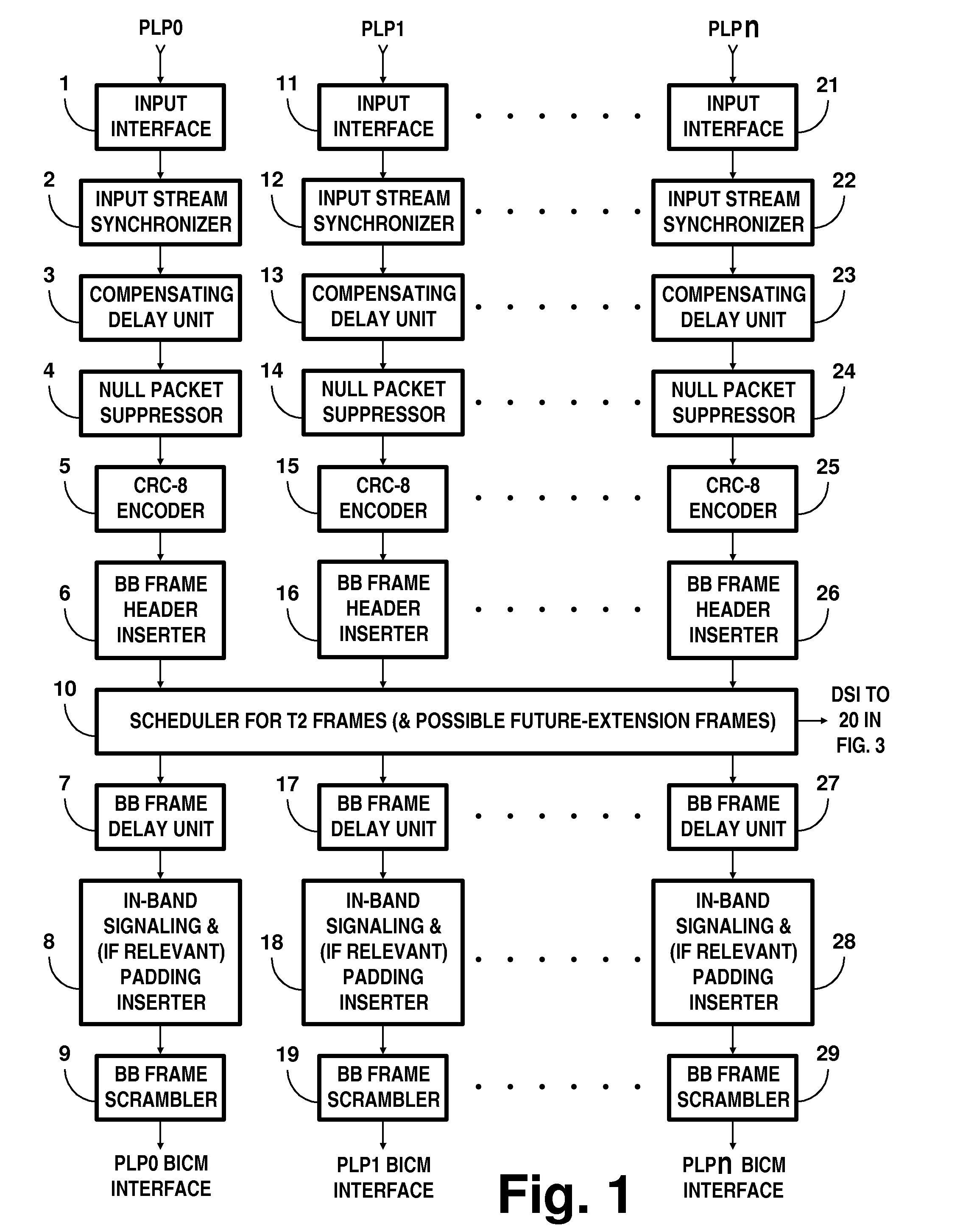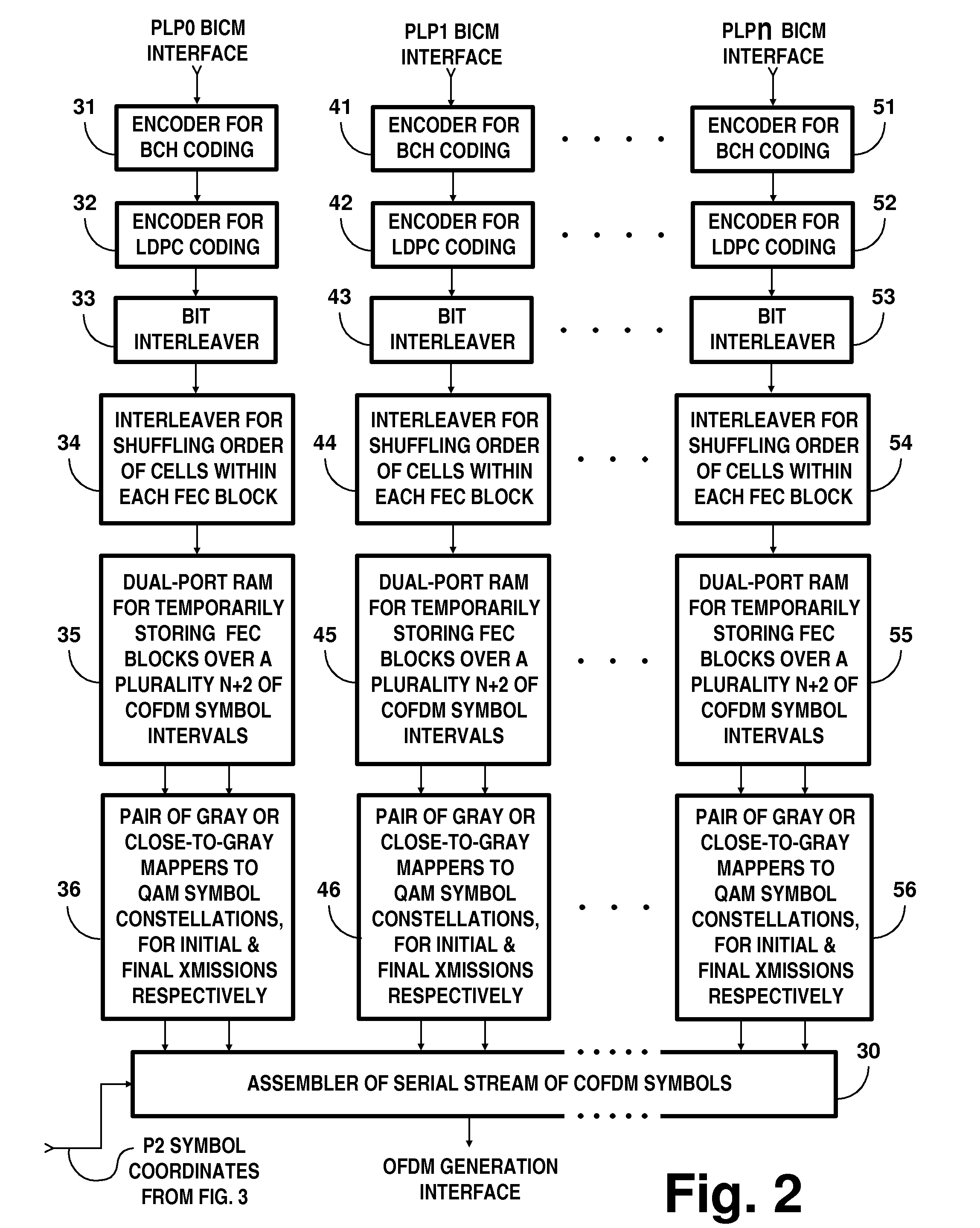Conveying metadata by modulation of pilot carriers in COFDM broadcasting
a pilot carrier and cofdm technology, applied in the field of metadata transmission, can solve the problems of increasing signaling overhead, reducing the likelihood of loss of a few tps bits, and loss of all tps information regarding the fram
- Summary
- Abstract
- Description
- Claims
- Application Information
AI Technical Summary
Benefits of technology
Problems solved by technology
Method used
Image
Examples
Embodiment Construction
[0042]FIGS. 1, 2, 3 and 4 depict a DTV transmitter apparatus generating COFDM signals designed for reception by DTV receivers. FIG. 1 depicts apparatus for generating baseband frames (BBFRAMES) at a Bit-Interleaved Coding and Modulation (BICM) interface. FIG. 2 depicts apparatus for generating bit-wise forward-error-correction (FEC) coding and subsequent COFDM symbol blocks responsive to the BBFRAMEs supplied at the BICM interface. FIG. 3 depicts apparatus for generating bit-wise forward-error-correction (FEC) coding and subsequent COFDM symbol blocks responsive to first layer (L1) conformation specifications and to dynamic scheduling information (DSI). FIG. 4 depicts apparatus for generating and transmitting radio-frequency COFDM signals. Except for the processing of QAM symbol constellations into COFDM symbols, the DTV transmitter apparatus depicted in FIGS. 1, 2, 3 and 4 is essentially the same as specified in ETSI standard EN 302 755 V1.3.1 published in April 2012, titled “Digit...
PUM
 Login to View More
Login to View More Abstract
Description
Claims
Application Information
 Login to View More
Login to View More - R&D
- Intellectual Property
- Life Sciences
- Materials
- Tech Scout
- Unparalleled Data Quality
- Higher Quality Content
- 60% Fewer Hallucinations
Browse by: Latest US Patents, China's latest patents, Technical Efficacy Thesaurus, Application Domain, Technology Topic, Popular Technical Reports.
© 2025 PatSnap. All rights reserved.Legal|Privacy policy|Modern Slavery Act Transparency Statement|Sitemap|About US| Contact US: help@patsnap.com



